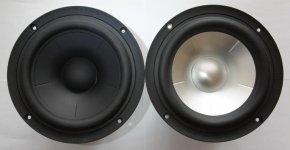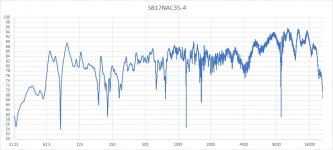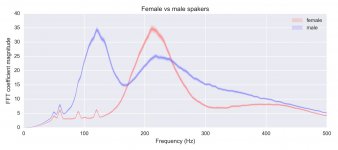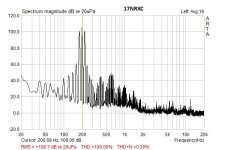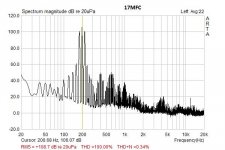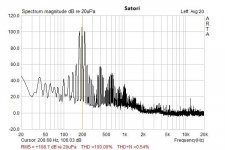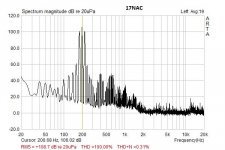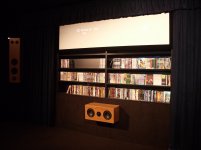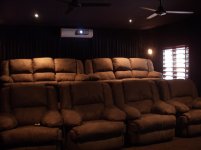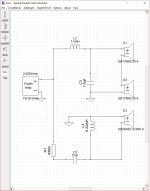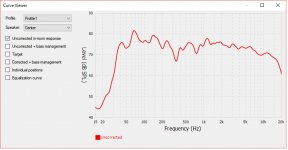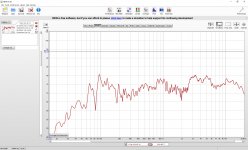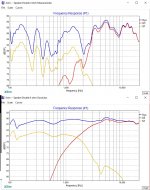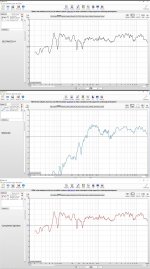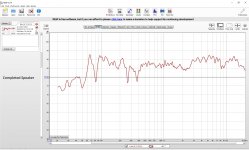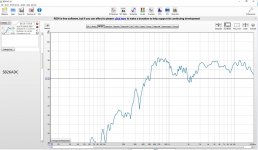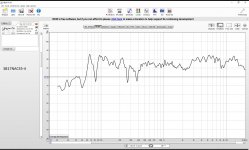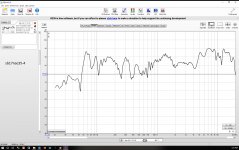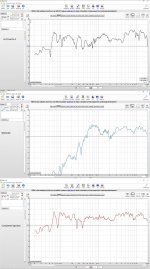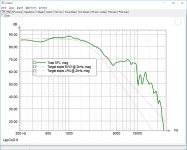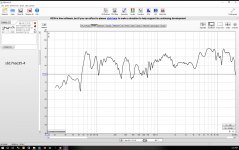Hi,
I know that many people are interested in the very nice SB17NBAC35 mid-woofer driver and I have published some measurements here:
SB17NBAC35-4 Measurements
SB17NBAC35-8 Measurements
I've also published a comparison between the SB17NBAC35-4 (black) and SB17NAC35-4 (silver) versions here:
SB17NBAC35-4 vs SB17NAC35-4 Measurements
Very nice mid-woofers with high price/performance ratio!
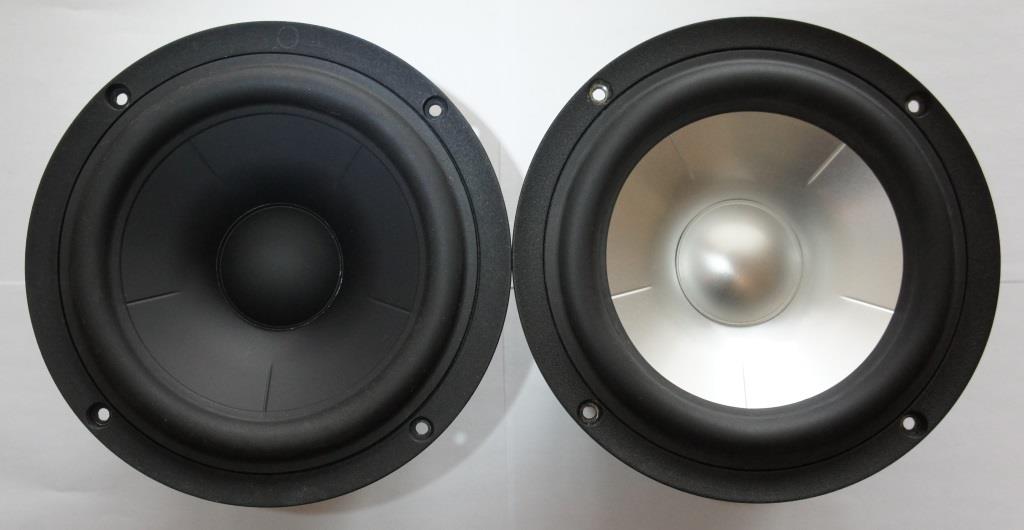
Cheers,
/Göran
I know that many people are interested in the very nice SB17NBAC35 mid-woofer driver and I have published some measurements here:
SB17NBAC35-4 Measurements
SB17NBAC35-8 Measurements
I've also published a comparison between the SB17NBAC35-4 (black) and SB17NAC35-4 (silver) versions here:
SB17NBAC35-4 vs SB17NAC35-4 Measurements
Very nice mid-woofers with high price/performance ratio!
Cheers,
/Göran
Attachments
Low frequency response
I use two of these drivers with a SB26ADC crossed over 2nd order at 2000hz in a 51 litre ported enclosure and used in a home theatre system. These sound great in the mid range but I found the response in the female talking voice range to be very lumpy. Cersei's voice in Game of Thrones is particularly problematic - it seems to double in volume at certain frequencies. She's annoying enough as it is!
Has anyone else found this response and know how to fix it?
I use two of these drivers with a SB26ADC crossed over 2nd order at 2000hz in a 51 litre ported enclosure and used in a home theatre system. These sound great in the mid range but I found the response in the female talking voice range to be very lumpy. Cersei's voice in Game of Thrones is particularly problematic - it seems to double in volume at certain frequencies. She's annoying enough as it is!
Has anyone else found this response and know how to fix it?
Attachments
Probably the suspension surround does the trick of producing artifacts in that range. The "enlarged image" of the voice could be addressed to the cone itself - the design is more towards a good subwoofer rather than a mid-range as the suspension profile suggests.
It asks for a midrange; I don't see many...

It asks for a midrange; I don't see many...
I use two of these drivers with a SB26ADC crossed over 2nd order at 2000hz in a 51 litre ported enclosure and used in a home theatre system. These sound great in the mid range but I found the response in the female talking voice range to be very lumpy. Cersei's voice in Game of Thrones is particularly problematic - it seems to double in volume at certain frequencies. She's annoying enough as it is!
Has anyone else found this response and know how to fix it?
i do not understand those graphs, please can you tell more?
i do not understand those graphs, please can you tell more?
The frequency response on the left is the SB17NAC35-4 response measured at 1m with Room EQ Wizard (REW) using the USB microphone that came with my Anthem MRX 1120 amp. I graphed it in Excel so there is no smoothing and with a frequency step of 0.4 Hz it is very jagged.
The graph on the right is something I looked up to see the frequency of the human voice since that is the frequency where I have problems with my speaker. The loudest portion of the female voice (in red) is 160-280 hz and you can see the response jump around a lot in that range.
I use a sub-woofer in my system crossed over at 80 hz. Is anyone else using it down to that range or are people exclusively using this in 3-way designs?
These sound great in the mid range but I found the response in the female talking voice range to be very lumpy.
For typical 2-way cabinet widths, baffle step effects as high as +/- 2db can occur over the vocal range.
1) compare sound between against-the-wall placement and into-the-room placement.
With aluminum 7" midrange using 2kHz LR2 circuits, beaming from upper harmonics cone break-up will only see -18db attenuation.
1) Aim both speakers directly at the listener and run test tracks while listening for SPL bumps.
===========
Even with a physically stepped front baffle for T-M time alignment, Troels Gavensen's SBAcoustics 61-NAC design uses a 2.1kHz crossover frequency with BW3 circuit on the SB26ARC-4 aluminum tweeter and LR4 circuit on the SB17NAC35-5 aluminum midrange. The midrange cone break-up artifacts are attenuated by 30db.
From simulations, a 2kHz crossover frequency using BW3 circuit on the tweeter and BW3 circuit on the midrange models well with midrange cone break-up artifacts attenuated by 27db
The frequency response on the left is the SB17NAC35-4 response measured at 1m with Room EQ Wizard (REW) using the USB microphone that came with my Anthem MRX 1120 amp. I graphed it in Excel so there is no smoothing and with a frequency step of 0.4 Hz it is very jagged.
The graph on the right is something I looked up to see the frequency of the human voice since that is the frequency where I have problems with my speaker. The loudest portion of the female voice (in red) is 160-280 hz and you can see the response jump around a lot in that range.
I use a sub-woofer in my system crossed over at 80 hz. Is anyone else using it down to that range or are people exclusively using this in 3-way designs?
thank you for the info, i can not detect anything wrong in the 200hz region, see responsgraphs below for sb17nac, mfc, nrxc, satori.
if you time gate your measurement so that we can see the response without reflections, how does the frequency respons look then? Too much room reflections now obscure the direct sound.
Attachments
Just noticed sub-woofer added in post #10.I use a sub-woofer in my system crossed over at 80 hz.
With the subwoofer switched-OFF do you still hear irregular SPLs on female voices? Does the sound-stage change, improve or degrade, with the 80Hz subwoofer OFF? If you change the subwoofer crossover to 60Hz, do vocals or the sound-stage change, improve or degrade?
I'm fairly new to speaker building so don't understand reading those responsgraphs or time gating my measurement. The sub-woofer makes no difference to how I perceive the spikes in loudness in my system.
I did the measurements in my theatre, horizontally, away from the the walls which all have curtains like a proper theatre so there are virtually no sound reflections and the sub-woofer was not involved.
Attached are the responses from the built speaker (two SB17NAC35-4 in series with a SB26ADC crossed at 2,000 hz 2nd order in 51 litre ported) measured using REW (using 1/48 smoothing) then the raw ARC response as well as the crossover design.
I chose this combination because I was after accurate flat response without colouration especially in the vocal range, and these drivers have people raving about them here. Above the vocal range these are awesome but I'm disappointed of the response within the vocal range.
The response of these drivers seems a lot less smooth than the ones sb published or those by AudioExcite. Maybe I'm doing something wrong? Has anyone else measured these, especially in the low end down to 80 hz?
I did the measurements in my theatre, horizontally, away from the the walls which all have curtains like a proper theatre so there are virtually no sound reflections and the sub-woofer was not involved.
Attached are the responses from the built speaker (two SB17NAC35-4 in series with a SB26ADC crossed at 2,000 hz 2nd order in 51 litre ported) measured using REW (using 1/48 smoothing) then the raw ARC response as well as the crossover design.
I chose this combination because I was after accurate flat response without colouration especially in the vocal range, and these drivers have people raving about them here. Above the vocal range these are awesome but I'm disappointed of the response within the vocal range.
The response of these drivers seems a lot less smooth than the ones sb published or those by AudioExcite. Maybe I'm doing something wrong? Has anyone else measured these, especially in the low end down to 80 hz?
Attachments
I'm fairly new to speaker building so don't understand reading those responsgraphs or time gating my measurement. The sub-woofer makes no difference to how I perceive the spikes in loudness in my system.
I did the measurements in my theatre, horizontally, away from the the walls which all have curtains like a proper theatre so there are virtually no sound reflections and the sub-woofer was not involved.
Attached are the responses from the built speaker (two SB17NAC35-4 in series with a SB26ADC crossed at 2,000 hz 2nd order in 51 litre ported) measured using REW (using 1/48 smoothing) then the raw ARC response as well as the crossover design.
I chose this combination because I was after accurate flat response without colouration especially in the vocal range, and these drivers have people raving about them here. Above the vocal range these are awesome but I'm disappointed of the response within the vocal range.
The response of these drivers seems a lot less smooth than the ones sb published or those by AudioExcite. Maybe I'm doing something wrong? Has anyone else measured these, especially in the low end down to 80 hz?
Hi Tropic,
How did you come up with this cross-over design? Is it based on any measurements and what target cross-over topology and slopes did you aim for in this design?
From your control measurement it seems like the frequency response is very hot between 2.5-6kHz and a bit elevated between 0.8-1.2kHz. You might need some more baffle step compensation and a single 1.5mH coil might not be sufficient to achieve that. Also the tweeter response probably needs some adjustments. Again, what topology and slopes are you aiming for? An electrical 2nd order cross-over for both the woofer and tweeter is probably not enough for doing the job for you.
I've attached a picture showing two SB17NBAC35-4 connected in series. The measurement is done at 1m exactly in the middle between the two mid-woofers which has a spacing of 29cm between them. The enclosure width is 20cm.
As you can see, your mid-woofer cross-over achieves almost a 3rd order BW topology acoustically, but has insufficient roll-off at higher frequencies and perhaps too little baffle step compensation.
Cheers,
/Göran
Hi Göran,
Thanks for the reply. I wasn't able to open your attachment to see your curve of 2 in series. Can you attach it as a .jpg please?
Here's how/why I designed the crossover:
I couldn't find any .frd files for these drivers online so made some very crude ones based on the smooth curves I saw online. I chose 2,000 hz as the crossover frequency since it is pretty much 2 octaves above the tweeter roll off and 2 octaves below the woofer break up. I used an online tool to get the basic 2nd order lr crossover and then made that in XSim. And I liked 2nd order since swapping the inputs to the tweeter would give it the same phase response at the crossover frequency. I thought I was being very clever, tweaking and tweaking some more to get the smoothest response on XSim, getting it all within a few db (see the bottom XSim graph showing the system and crossed driver responses).
I got the drivers and components, made it and put it in my existing enclosure. I was rather disappointed.
The response was way "rougher" than I'd seen online. I've made some .frd files (attached) of the separate driver responses in my enclosures and whacked them back into XSim (the top XSim graph). It shows the nasty 2kh drop that is caused by the tweeter (REW image attached). And the very lumpy SB17NAC35-4 response in the vocal range (below 500hz) is present in the uncrossed response and nothing to do with the crossover.
At the moment, I'm not overly concerned by the upper end since I am questioning the woofer choice. It sounds good reproducing music but no good for natural speaking. Am I using it wrong? Is this only to be used in a 3 way with the lower driver handling the vocals instead of the SB17NAC35-4? Can anyone suggest a better driver for reproducing speech?
Thanks for the reply. I wasn't able to open your attachment to see your curve of 2 in series. Can you attach it as a .jpg please?
Here's how/why I designed the crossover:
I couldn't find any .frd files for these drivers online so made some very crude ones based on the smooth curves I saw online. I chose 2,000 hz as the crossover frequency since it is pretty much 2 octaves above the tweeter roll off and 2 octaves below the woofer break up. I used an online tool to get the basic 2nd order lr crossover and then made that in XSim. And I liked 2nd order since swapping the inputs to the tweeter would give it the same phase response at the crossover frequency. I thought I was being very clever, tweaking and tweaking some more to get the smoothest response on XSim, getting it all within a few db (see the bottom XSim graph showing the system and crossed driver responses).
I got the drivers and components, made it and put it in my existing enclosure. I was rather disappointed.
The response was way "rougher" than I'd seen online. I've made some .frd files (attached) of the separate driver responses in my enclosures and whacked them back into XSim (the top XSim graph). It shows the nasty 2kh drop that is caused by the tweeter (REW image attached). And the very lumpy SB17NAC35-4 response in the vocal range (below 500hz) is present in the uncrossed response and nothing to do with the crossover.
At the moment, I'm not overly concerned by the upper end since I am questioning the woofer choice. It sounds good reproducing music but no good for natural speaking. Am I using it wrong? Is this only to be used in a 3 way with the lower driver handling the vocals instead of the SB17NAC35-4? Can anyone suggest a better driver for reproducing speech?
Attachments
Last edited:
Whoops, I got the response images of the sb17nac35-4 wrong (I showed the system response again). I don't seem to be able to edit that post so here are the right ones.
These are all at 1/24 smoothing.
These are all at 1/24 smoothing.
Attachments
Last edited:
Hi Göran,
Thanks for the reply. I wasn't able to open your attachment to see your curve of 2 in series. Can you attach it as a .jpg please?
Hi,
Here´s the missing picture picture from post #15!
/G
Attachments
Last edited:
Hi Göran,
My measured response curve is very choppy below 1000 hz while yours is smooth. Can you post your frd file so I can compare them directly please, especially below 500hz?
I've seen only a few people who have actually used this speaker comment on this forum and they generally say they are very happy with them so does anyone have any suggestions why I am having trouble in the spoken voice range? I'd very much appreciate anyone who has used this in a 2-way system chime in here.
My measured response curve is very choppy below 1000 hz while yours is smooth. Can you post your frd file so I can compare them directly please, especially below 500hz?
I've seen only a few people who have actually used this speaker comment on this forum and they generally say they are very happy with them so does anyone have any suggestions why I am having trouble in the spoken voice range? I'd very much appreciate anyone who has used this in a 2-way system chime in here.
Attachments
I have nacs drivers at home, as well as mfc and nrx, and i have come to the conclusion i like the paper ones best, but you should get decent sound from the nacs too. Have you tried a steeper crossover too? A 3rd order electric circuit is minimum i think, try it out and then disconnect the tweeter and listen only to the mids with the new crossover, use pink noise and sine signals too
- Status
- This old topic is closed. If you want to reopen this topic, contact a moderator using the "Report Post" button.
- Home
- Loudspeakers
- Multi-Way
- SBAcoustics SB17NBAC35-4 and SB17NBAC35-8 measurements!
